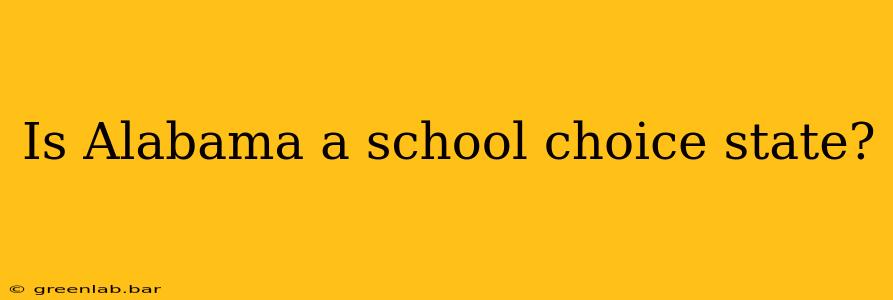Alabama's education landscape is evolving, offering parents a growing, albeit complex, array of school choices beyond the traditional public school system. While not universally considered a "school choice" state in the same vein as some others with more expansive programs, Alabama has made strides in expanding options for families seeking alternatives. This post will delve into the specifics of Alabama's school choice offerings, exploring their nuances and limitations.
Understanding Alabama's School Choice Initiatives
Alabama's approach to school choice isn't characterized by a single, sweeping program. Instead, it's a patchwork of different initiatives, each with its own eligibility criteria and limitations. These include:
1. Public School Choice within Districts:
Many Alabama school districts offer intra-district school choice, allowing students to attend schools within their district boundaries that aren't their assigned neighborhood school. This often depends on space availability and may not extend to all schools within the district. This is the most readily accessible option for most Alabama families.
2. Alabama Accountability Act and School Choice:
The Alabama Accountability Act (AAA) plays a significant role in providing school choice options, primarily through scholarships for students to attend participating private schools. However, the AAA is income-based, and not all families qualify. Eligibility is determined by factors such as household income and the student's school's performance rating. Furthermore, the number of scholarships available is limited.
3. Charter Schools:
Alabama has authorized charter schools, offering an alternative public school model with greater autonomy. However, the number of charter schools and their availability vary across the state. While these are public schools, they operate independently from traditional district oversight, representing a form of school choice for those within their attendance zones.
4. Homeschooling:
Alabama is a state that actively recognizes and supports homeschooling, providing a significant school choice option for families who prefer to educate their children at home. Parents must follow state regulations regarding curriculum and notification.
Limitations and Challenges of School Choice in Alabama
Despite the presence of these options, Alabama's school choice landscape faces certain challenges:
- Limited Funding and Scholarship Availability: The funding for scholarship programs like the AAA is often insufficient to meet the demand, leading to a lottery system or waitlists.
- Geographic Disparities: The availability of diverse school choice options varies significantly based on geographic location. Rural areas, for example, often have fewer options than larger urban centers.
- Transportation: Access to transportation can be a major barrier, especially for families choosing schools outside their immediate area.
- Eligibility Restrictions: Income-based restrictions and other eligibility criteria for certain programs can exclude many families from accessing school choice options.
Conclusion: A Complex and Evolving Picture
Alabama's journey toward broader school choice is ongoing. While the state offers various options beyond traditional public schools, these options are not always universally accessible due to funding constraints, geographic limitations, and eligibility requirements. Families considering school choice in Alabama should thoroughly research the available options in their specific area and carefully assess their eligibility for different programs. The current system represents a blend of progress and limitations, suggesting that the debate and evolution of school choice in Alabama are far from over.

